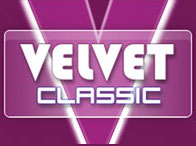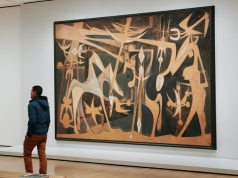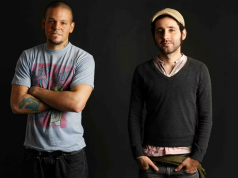
“In his new book, And the Roots of Rhythm Remain, music impresario Joe Boyd traces the vast influence of global music. Here, how Jamaican sound-system mavens helped kick off a worldwide beat.” Here are excerpts from “How Jamaica’s 19Vanity Fair50s DJs Gave Rise to Their Counterparts on the Disco and Hip-Hop Scenes” (published in Vanity Fair).
In Jamaica during the 1950s, people began to gather in parks and on beaches, partying to music that was spun by entrepreneurial disc jockeys and piped through outdoor loudspeakers. This quirk of economics, geography, and technology would not only vibrate across the island but, by the 1970s and ’80s, across the planet.
At the time, the British Colonial Office was trying to force the island into independence as part of what was called a “West Indies federation.” Jamaica, however, was different. Twelve hundred miles west of the other British islands, and larger and more populous than Trinidad, Jamaica had a longer and more brutal history, and, lacking Trinidad’s oil wells, was much poorer.
A decade before, Jamaica’s search for an economic engine had settled on bauxite, the raw material from which aluminum is forged. There was plenty of this high-grade dirt near the island’s surface, but not enough electricity on Jamaica to power a refinery, so raw bauxite was cheaply exported to be forged profitably into metal in British and Canadian mills. Digging up the earth also destroyed great stretches of tillable soil, driving displaced Jamaican farmers to Kingston to look for work. The result was a certain amount of wealth for an elite and ever-increasing poverty for the rest.
The bauxite effect combined with 1951’s Hurricane Charlie to change the face of Kingston. As the middle class moved out to the suburbs, the government rebuilt the devastated city by constructing “yards,” where many families were housed around a central court. Another initiative by the colonial administration was to grant “rediffusion” licenses to broadcasters, allowing private companies to place loudspeakers in town squares and government yards, relaying a steady stream of bland music, news, talk, and advertising across the island.
Jamaicans took to the technology but preferred choosing their own music. Radio ownership boomed and the island’s location at the western end of the Caribbean made it easy to tune in US “clear channel” stations after dark. The poor state of the economy also drove many to look for seasonal work in Florida; travel and radio combined to broaden Jamaicans’ musical horizons. If there had once been a superficial congruence between the tuneful, French- and Spanish-inflected music of Trinidad and that of Jamaica, the steady flow of rhythm and blues and jazz over radio waves, and in the grooves of 78s and 45s, turned Jamaica in a different direction.
Those “rediffusion broadcasts” sparked an idea that transformed Jamaican music. As the left-behind poor established themselves across much of central Kingston, the notion of blasting the sorts of music heard on US radio—Wynonie Harris, Jimmy Reed, Billy Eckstine, Louis Jordan, Fats Domino, Johnny Ace, and the like—over loudspeakers in open spaces known as “lawns” resulted in a “sound system” boom.
Descriptions of these 1950s Kingston dances invoke the scent of bougainvillea mixing with ganja smoke under the moon while a DJ gauged the balance between energy and romance in his choice of discs. As the evening progressed, he would move from the wild to the smooth as boys began holding girls closer, “greasin’ da crease” to a Jesse Belvin ballad. “It seem like to be a teenager in Jamaica during that era,” the singer and record producer Derrick Harriott would later recall, “was the best thing on earth.”
As Lloyd Bradley puts it in Bass Culture, the sound systems served as “a lively dating agency, a fashion show, an information exchange, a street status parade ground, a political forum [and] a centre of commerce,” while also providing a community bulletin board, with DJs announcing who was out of jail or back from England. These were family affairs; some remember dancing as teenagers with their grandparents while stalls dished up curried goat, callaloo and salt fish, fruit juice and beer. Under the noses of the authorities, a vividly Black urban culture was emerging on an island whose self-image had been dominated by whites and light-skinned Blacks and their very different vision of what Jamaica was supposed to look like as it moved towards independence.
Two factors dominated the competition between rival sound-system operators: volume and exclusivity. An early sign of the sonic wizardry that would later distinguish Jamaican record production was how Kingston sound mavens would wire higher and higher stacks of speakers to ever-more-powerful amplifiers, with the combined objective of giving patrons a visceral bass-heavy experience while drowning out smaller fry nearby. Dancers voted with their feet for systems that played great records they couldn’t hear on the radio; by scratching off the labels, disc jockeys tried to keep competitors from discovering the artists and titles of tracks that got crowds moving. Seasonal workers often headed to Florida with shopping lists and could seriously augment their fruit-harvesting wages if they came back with a suitcase full of coveted discs. Visiting American sailors would barter records for cigars, rum, ganja, and women.
With Jamaican nights so hot and humid, high-energy rock ’n’ rollers like Little Richard and Jerry Lee Lewis were never much of a factor; islanders preferred the late-’40s/early-’50s jump blues that blurred the line between rhythm and blues and jazz, especially those coming from New Orleans or Memphis. “Bloodshot Eyes” by Wynonie Harris and “Later for the Gator,” an instrumental by Willis “Gator Tail” Jackson, endured as totemic platters across the decade. When Jamaica began making its own records, sound-system tastes would be the guide. [. . .]
As white American teenagers jumped on the rhythm and blues bandwagon in the mid-’50s, transforming it into rock ’n’ roll, crowd-pleasing discs grew harder to find. The time had come for Jamaicans to make their own. Duke Reid, Coxsone Dodd, “Prince” Buster Campbell, and Lee “Scratch” Perry all became pioneering record producers, laying the cornerstones for a style of music with which this small island would conquer the world. [. . .]
Jamaicans trying to replicate American R & B created something new. First ska (Millie’s “My Boy Lollipop,” for one), then the rock-steady epitomized by the Harder They Come soundtrack—“By the Rivers of Babylon,” Jimmy Cliff, Toots and the Maytals, Desmond Dekker—and culminating in the reggae that the genius of Bob Marley and the Wailers gave the world, the indelible music emerging from this “island in the sun.” The world may have loved it, but back home, battered by poverty and political violence, Jamaicans were demanding a different soundtrack. By the mid-’70s, DJs once again ruled Kingston. [. . .]
Sound-system crowds loved the resulting exclusives. Other producers began stopping by Tubby’s house, where the front room had become a pirate’s den of effects and gadgets; together, they explored a new sound they called “dub.” [. . .]
For full excerpt from the book, see https://www.vanityfair.com/style/story/excerpt-jamaica-djs-gave-rise-to-disco-hip-hop
“In his new book, And the Roots of Rhythm Remain, music impresario Joe Boyd traces the vast influence of global music. Here, how Jamaican sound-system mavens helped kick off a worldwide beat.” Here are excerpts from “How Jamaica’s 19Vanity Fair50s DJs Gave Rise to Their Counterparts on the Disco and Hip-Hop Scenes” (published in Vanity Fair). In







